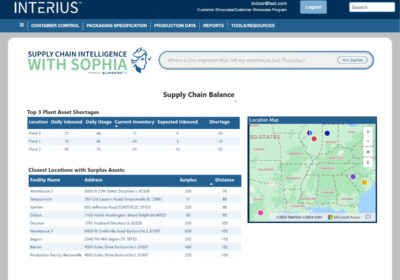When you’re preparing for your international expansion, it’s important to consider current cross-border ecommerce trends. They’re the backbone of global ecommerce and a driver for success.
As ecommerce evolves, so does the way companies conduct themselves. In order to be seen in a new market, you need to be exceptional and offer something unique to customers that is relevant to their needs.
These are the latest cross-border trends that are driving global ecommerce forwards and that you need to embrace today.
Capitalising on the global shopping events
Consumers have always been interested in searching for and finding the best deals online, whether it’s through an email marketing sale or website coupons. With inflation and the rising cost of living, demand is even higher, but so is the accessibility to such offers.
Global shopping events, such as Black Friday, have made searching for deals easy, fast, and reliable. Consumers from all over the world are anticipating these festivals of good deals way in advance, preparing to splurge on big and small purchases.
For merchants, these events are a profitable opportunity to introduce their brand and goods to foreign markets and make incredible sales.
In the U.S. and some parts of Europe, Amazon Prime Day is one of the biggest online shopping events of the year. With a wide variety of categories, brands, and markets, Amazon Prime Day is a secure way for merchants to attract new customers and generate revenue. In 2021, Amazon’s 48-hour Prime Day generated online sales totalling US$11 billion.
Another global phenomenon that excites consumers and merchants alike is Black Friday and Cyber Monday. 2021 marked a year of grandiose sales for the whole world thanks to those events. Online purchases in Germany and Spain during Black Friday reached four times higher than an average day. In Brazil, ecommerce revenue increased by 5% during Black Friday compared to the year before.
The Asian market is capitalising on Double 11 – the leading online shopping event. In 2021, the Chinese ecommerce giants Alibaba and JD.com generated sales totalling US$139 billion during the event.
Convenient shopping with mcommerce
As consumers are looking for a convenient online shopping experience, they’re embracing the ease, speed, and accessibility that mobile phones provide.
This has given rise to mobile commerce, or mcommerce. Technological advancements, such as branded shopping apps, 5G wireless, and social shopping are making mcommerce even more appealing. Smartphone retail mcommerce sales reached $221.2 billion in 2021 and are projected to hit $418.9 billion by 2024.
During the Black Friday and Cyber Monday shopping event in 2021, 71% of purchases were made via mobile phones and only 29% on desktops globally. This has enabled an even faster and more accessible shopping experience and opens the opportunity for merchants to reach and convert a wider audience.
The rise of social commerce
Another trend that offers a convenient shopping experience is social commerce. Through social media platforms such as Facebook and Instagram, merchants can advertise their products and services, and customers can make instant purchases without having to leave the app.
In the U.S., the revenue from social commerce is projected to reach almost $80 billion by 2025. The wide use of social media apps makes it almost inevitable that brands will streamline purchases. As 49% of brands are investing in social commerce content in 2022, the competition is set to become fiercer. We’re expecting to see more branded shopping apps, more social commerce content on TikTok and Instagram, and more SMS and Facebook Messenger marketing campaigns, so consider selling on one of these platforms.
If you’re looking to expand into China, then social commerce will likely play a key role in your cross-border strategy. Nearly half of China’s consumers shop on social media, and in 2021, $351 billion in sales were made via social ecommerce in this market.
Ecommerce livestream, in particular, is currently trending in China. In 2020, 10% of China’s ecommerce revenue was attributed to livestream ecommerce with 824.5 million buyers. It’s expected that over 45% of Chinese digital shoppers aged 14 and over will be shopping via livestream by the end of 2023.
Livestreams are like virtual shopping events, where customers can see products in real time and get their questions answered. Integrating livestreams into ecommerce websites and on social-networking apps is easy, which makes them widely popular and a great way for merchants to increase their revenue.
Buy now, pay later (BNPL) encourages more sales
Buy Now, Pay Later (BNPL) is becoming increasingly popular in the ecommerce world. This short-term financing arrangement allows customers to make a purchase and pay it off in instalments, usually interest-free.
According to JP Morgan, the rise of BNPL, alongside cross-border ecommerce and mcommerce, is a result of consumers’ “willingness to adopt new shopping and payment methods”. 30% of the Australian population, for example, has a BNPL account, and the younger generation is joining the move too.
One of the biggest BNPL companies, Klarna, almost doubled its gross merchandise volume (GMV) between January and March 2021 in comparison with the year before. Downloads of the platform experienced a 125% increase in April 2021, while users doubled to 17 million.
As a business sets out to expand internationally, it’s worth considering adding BNPL as a payment option to encourage more purchases. Also, research trending payment methods in the market you’re expanding into and add those to your website.
Jumping into the metaverse
Advancements in technology and the implementation of the internet of things and AI is enabling borderless ecommerce even more. The metaverse, for example, which is a 3D virtual world, is taking the customer experience to a whole new level.
Many online retailers now feature a virtual store, where customers can experience the products in a 3D world. Beauty brand Charlotte Tilbury, for example, offers a virtual Pillow Talk Party where customers can view 3D products, watch tutorials to unlock gifts, and engage in live commerce with friends.
In a similar fashion, Nike and Gucci have fashion shows featured in the multiplayer game Roblox.
Non-fungible tokens (NFTs) are also becoming an essential part of the ecommerce world. Clothing brand The Hundreds, for example, has given 25,000 NFT tokens to customers, which they can use for merch drops and many other benefits. NFTs are helping to build a community of customers and fans and increase loyalty and brand value.
Embracing technology is key for making your business stand out in your home and foreign markets. Geographic borders can be overcome, and you can engage your customers with your brand in an immersive and innovative way.
Tapping into the latest cross-border ecommerce trends is a great way for merchants to reach new customers and markets and increase their revenue. It’s clear that the digital revolution is driving global ecommerce forwards, and this is the time to step up your game.

Sources
https://www.statista.com/statistics/276636/smartphones-us-retail-m-commerce-sales/
https://www.shopify.com/blog/bfcm-data
https://www.shopify.com/enterprise/social-commerce-trends
https://www.shopify.com/enterprise/global-ecommerce-statistics
https://agencychina.com/blog/livestream-ecommerce-gmv/
https://www.jpmorgan.com/solutions/treasury-payments/global-ecommerce-trends-report
https://www.reuters.com/technology/klarna-reports-jump-quarterly-transactions-value-2021-05-28/
https://www.charlottetilbury.com/uk/virtual-store#/
https://www.voguebusiness.com/technology/inside-gucci-and-robloxs-new-virtual-world








